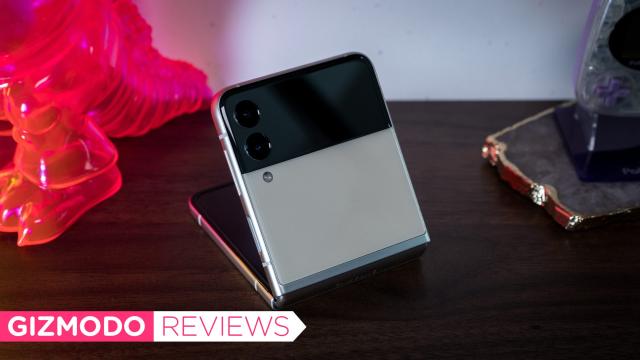The Galaxy Z Flip 3 is the Android smartphone of my dreams — mostly. It’s everything I loved about my flip phone from the early aughts, combined with the abilities of a flagship smartphone. But just as I had to ease into the idea of an all-screen phone a decade ago, I’m now finding myself taking a beat before jumping to a foldable.
The Z Flip 3’s flip-down body is a total flashback to the past. I’ve never felt more satisfied hanging up on a video call — regular phone calls are less frequent in this day and age — or even shutting the phone closed after a raid gone bad in Pokémon Go. I love the malleability of the Z Flip 3, which is unlike anything we had back in the day. It has all the requisite features you want out of a high-end smartphone, along with a form factor that lets you take better selfies, pocket the device in a pair of jeans, and even take it around shallow bodies of water.
As with everything in life, there are caveats. The main one here is that there is a learning curve because the Galaxy Z Flip 3 is a different type of phone. The differences were enough to become a disruption to my daily routine that led me back to my brick phone to move more quickly between tasks. Perhaps that speaks more to the general state of the world to which Samsung is marketing its new foldable smartphones than anything else. And I think that’s something to consider if you’re thinking about switching to the Galaxy Z Flip 3.
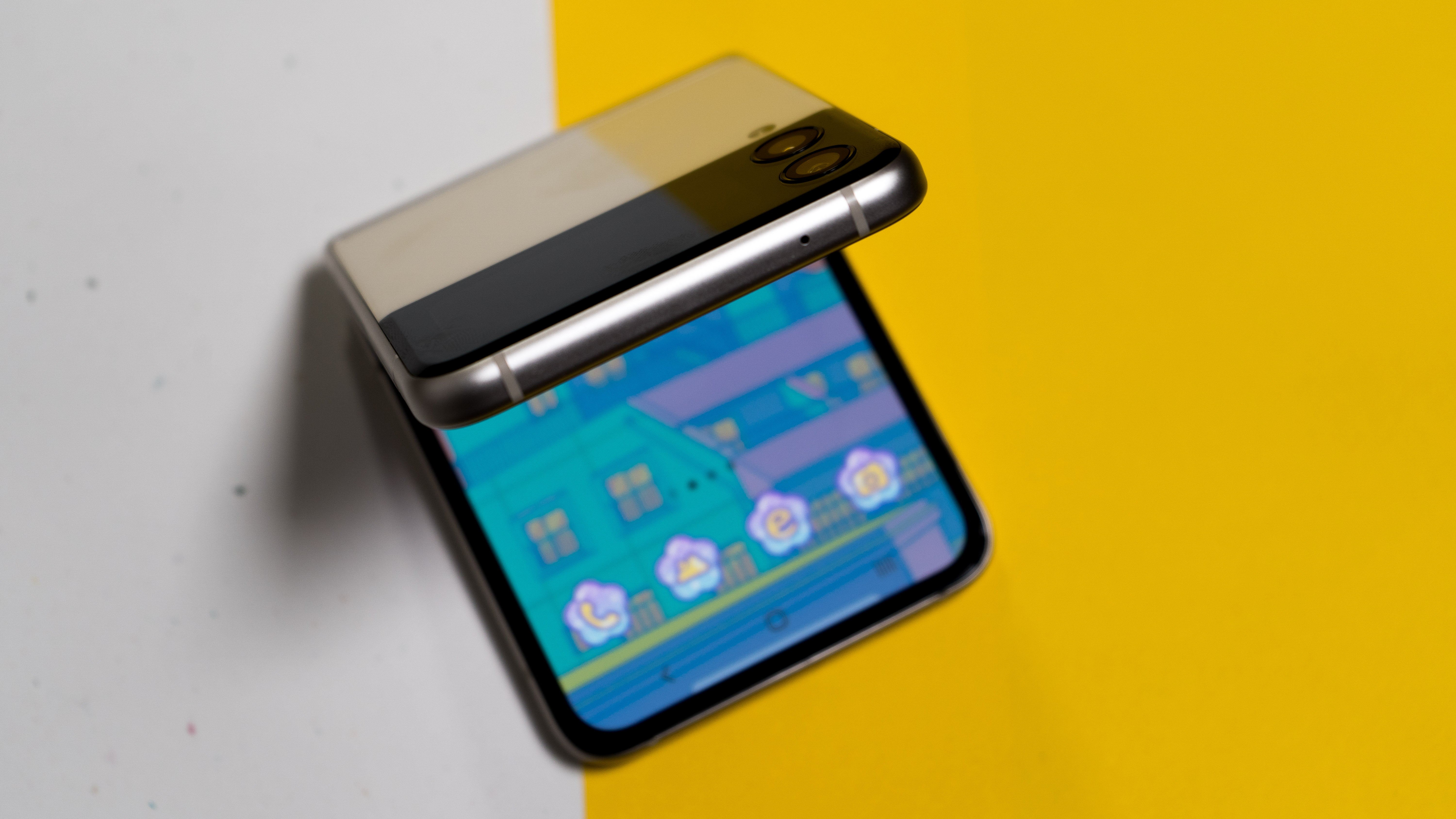
Samsung Galaxy Z Flip 3
What is it
A folding smartphone
Price
Starts at $1,499
Like
Form factor is seriously versatile, cover display aids in taking high-resolution selfies, overall flagship-level performance
Dislike
Battery life is shorter than other similarly-priced phones, folding form factor requires a learning curve, Android apps aren't entirely optimised
Flip Phone Redux
The Galaxy Z Flip 3 is Samsung’s third-generation effort at putting the flip phone back into the gadget zeitgeist. Its design is sure to turn heads, which Samsung is betting on. Every Snapchat ad (yes, I still use Snapchat) I’ve seen for the folding phones thus far claims that people will do double-takes when they see the device. I experienced a variety of reactions myself each time I showed off the Z Flip 3. A few folks seemed awed by the folding mechanism, while another friend was vehemently against the entire idea of a folding smartphone.
But flipping the phone closed is only one way to use the Galaxy Z Flip 3. When laid out, it looks and functions like a regular “flat” phone. It has a shiny backside, though the fill is matte and solid, giving it a similar effect to a car with a solid colour chassis. The glass back is also very slippery, so it will need a bit of a watchful eye if you’re without a case to keep it from sliding around or off a table.
The Z Flip 3’s overall aesthetic is fun — what an advertising executive might refer to as “young at heart.” Samsung is offering seven different colour options, three of which are exclusively available online. There’s both a pink and purple variant, plus cream, green, grey, and phantom black. And paired with one of its bold-coloured silicon cases, the Z Flip 3 is one of the cutest smartphones available. You will likely see it sprout up in gadget aesthetic TikToks and Instagram Reels in the coming months. Brace yourselves.
The Galaxy Z Flip 3 is Samsung’s third iteration of the folding flip phone, so it’s had some time to figure out the overall design. Unlike the Galaxy Z Fold 3, which hails the company’s new under-display camera technology, the Z Flip has a punch-out camera squarely in the middle of the 6.7-inch Dynamic AMOLED display. That helps cut down on the outer bezel of the Z Flip 3, which is noticeably bigger than the OnePlus 9 Pro, for example. I don’t mind the bezel, as the phone needs that bit of structure to help retain the folding display. It also gives me more options for gripping the phone, which is already a bit tricky with its tall, narrow profile.
High-Resolution Fold
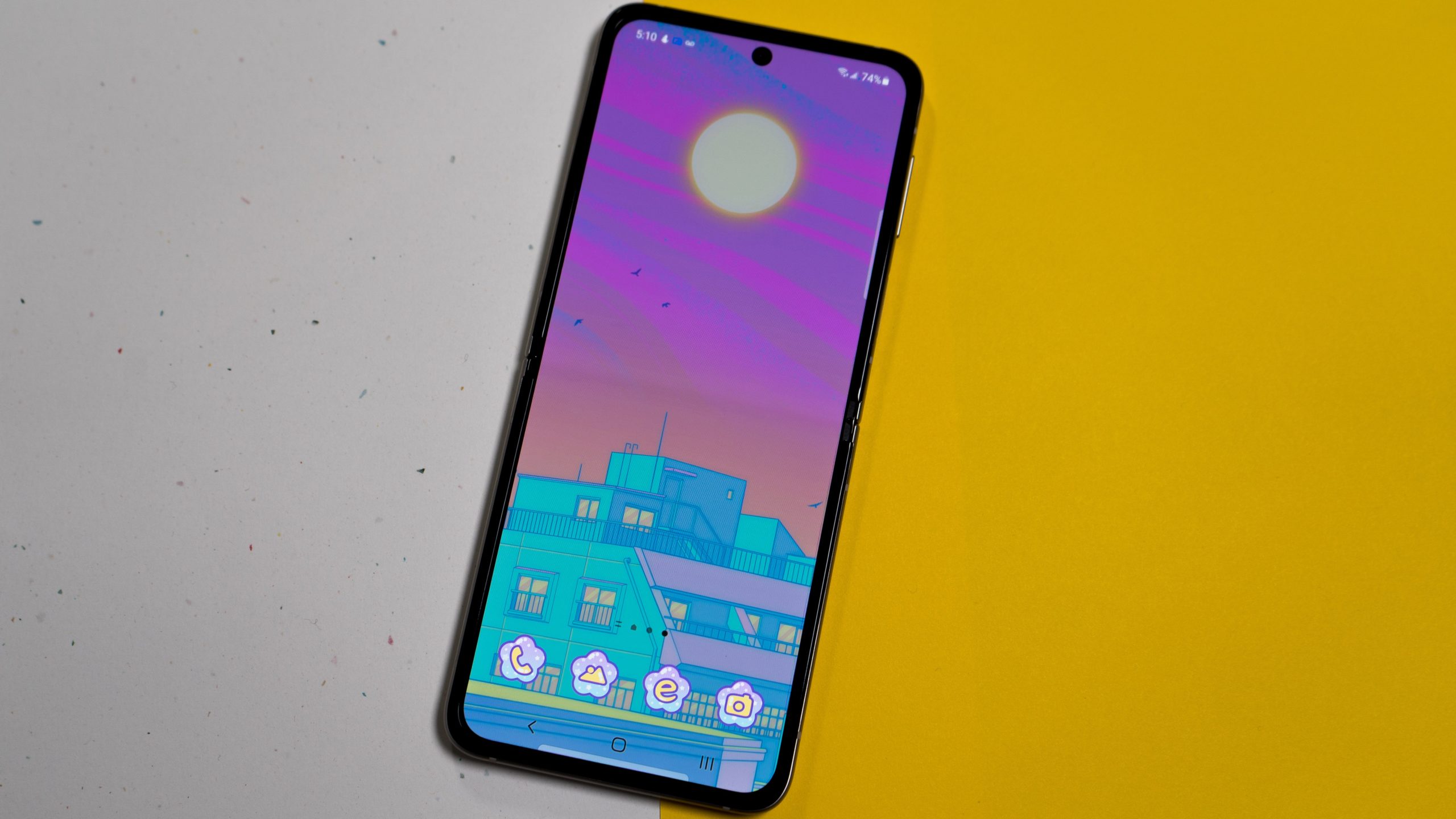
When the Z Flip 3 is laid out flat, it looks and functions like any other smartphone. I can still toss Poké balls, tap and select a mass of text, switch between applications, or clip it into a tripod in landscape mode to shoot photos. There is a noticeable crease in the middle of the Galaxy Z Flip 3’s 1080 x 2640 resolution display, though only when you’re staring carefully. From afar, and while there’s a video playing on screen, it’s hardly noticeable. The screen’s 120Hz refresh rate certainly helps make up for it.
There is a protective film over the screen to help maintain the integrity of the flexible display over time. I’m curious to see how the display panel will fare over months of use. Samsung claims each of its folding devices can do so about 200,000 times with nary a crack.
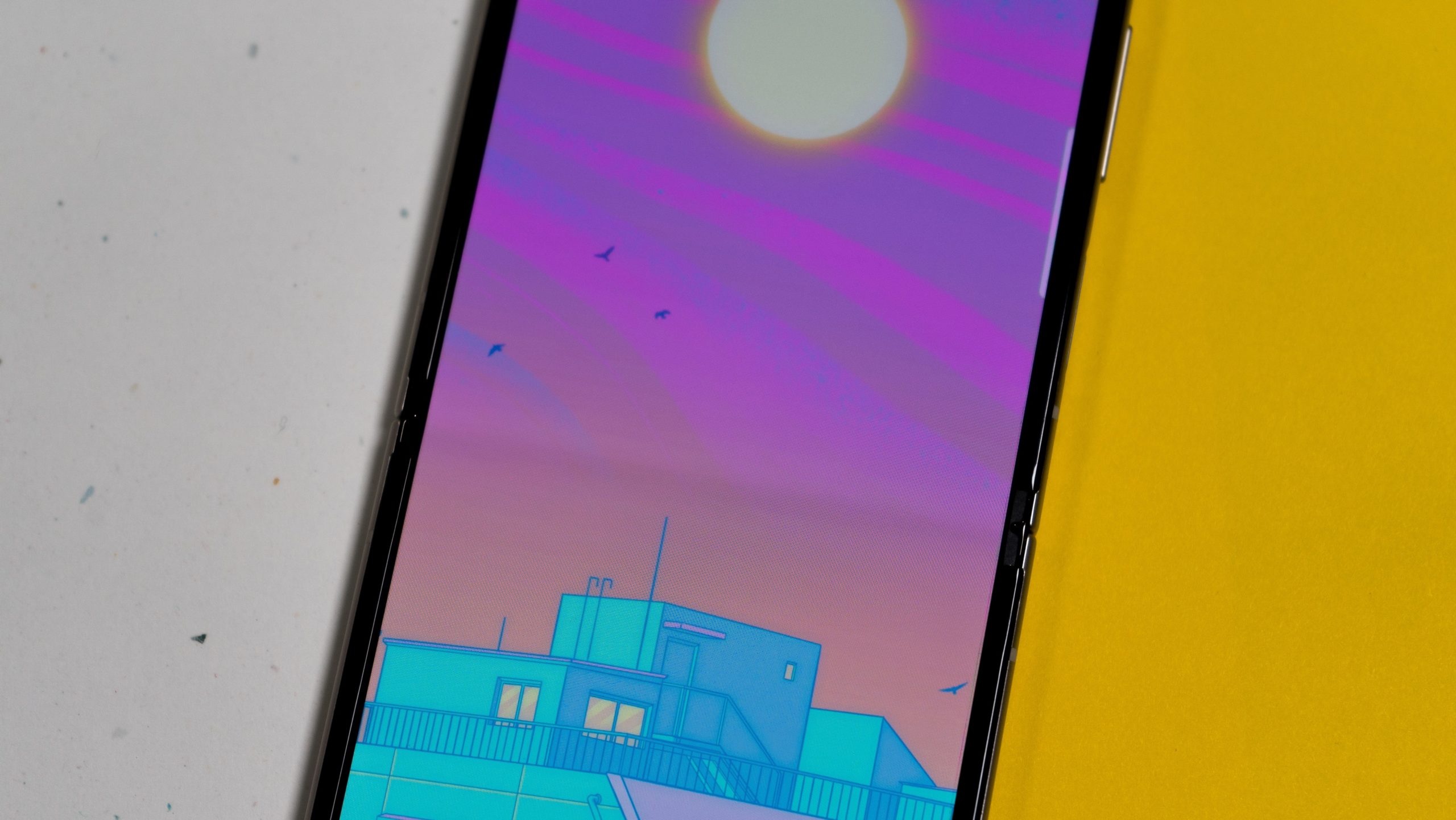
After a little over a week with this phone, I’m still trying to figure out how to handle the Galaxy Z Flip 3 in a way that feels natural. I had a heck of a time typing fast with my long nails, so I reluctantly cut them, hoping I’d have a more effortless time multitasking. That’s when I realised that the issue for me is the lack of the third-party accessory I rely on the most: the Pop Socket. I have become so reliant on its existence over the years — I started using one when I bought the first-generation Google Pixel. Every case for every phone I’ve used since then has had one. So when I converted over to the Z Flip 3, I had to adjust my use. I was cradling the Z Flip 3 a little more carefully at first since I didn’t have that extra apparatus on the back to hang on to. The silicon case helped me grip the Z Flip 3 with a little more confidence, and I started to use the included keychain loop on the back, similar to how I’d use a Pop Socket to secure the phone between my fingers. If you’ve built your life around one particular way of handling a smartphone, the Z Flip 3 will throw a wrench into that.

Remember when you could satisfyingly hang up on someone by simply flipping a phone shut? It’s hard to do one-handed with the Galaxy Z Flip 3. Though it’s possible, the phone requires a bit of “breaking in” before it’s soft enough to take that wielding. I had a hard time opening and closing it with just my dominant hand. Anyway, the flip phones that I was handling as a young adult were much smaller than this relative behemoth.
Needs More Folding Software
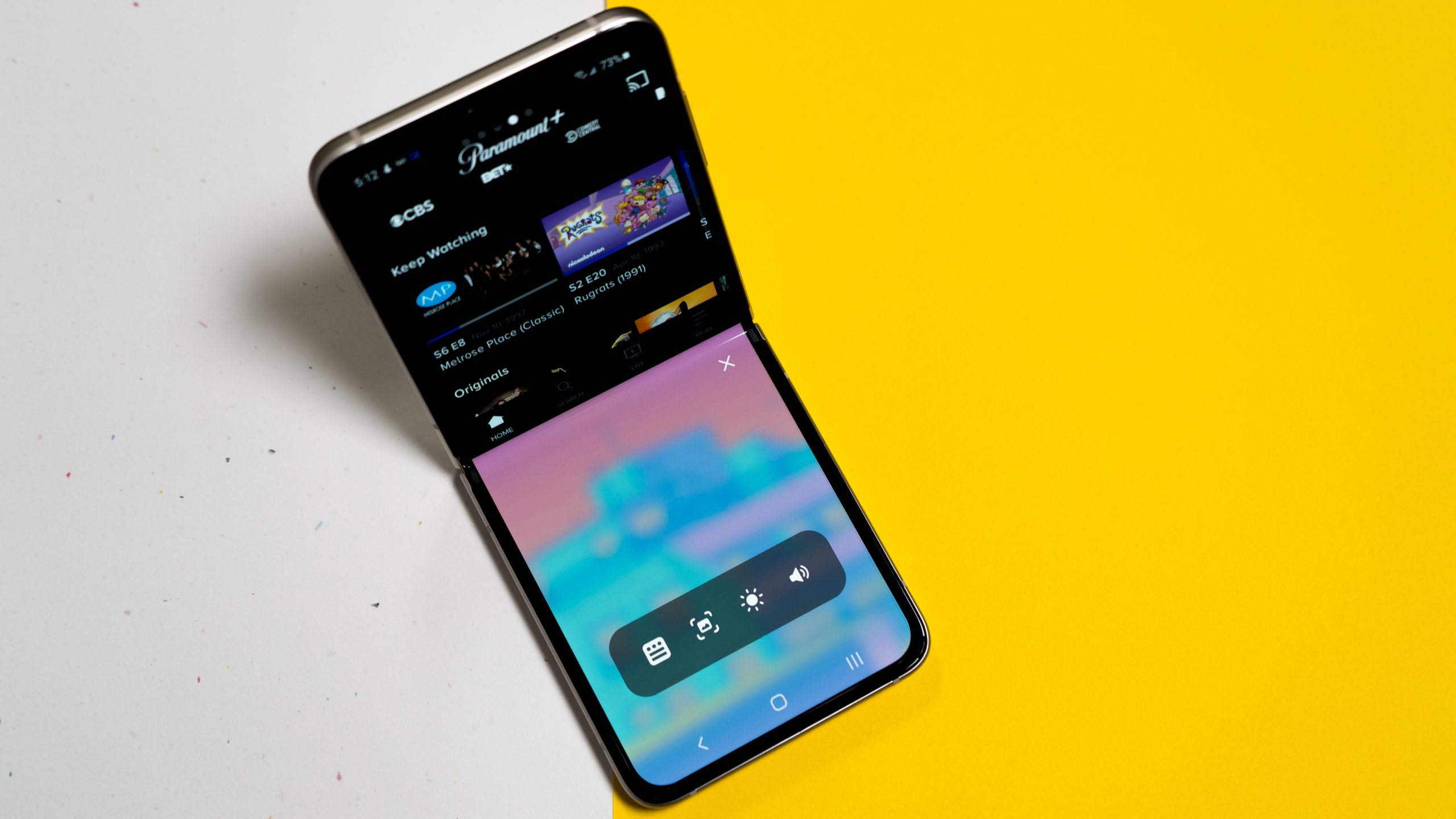
Another way to use the Z Flip 3, which I ended up using the most, is by folding it at an angle so that half of the screen is in use with your app and choice, and the other half acts as a prop a second display of sorts. In most instances, you’ll see a navigational menu pop up at the bottom, with options to adjust the volume and screen brightness, as well as an option to bring down the notification panel so that you don’t have to attempt to drag your finger across the bent-up display. There’s also a handy screenshot button, though the screen cap will include the navigational buttons, so you’ll have to crop it if you want to leave that bit out.
Not every app can natively support the Z Flip 3’s folding display mechanism, but a Labs feature hidden deep in the settings menu will force any app you want into the half-screen mode. It’s great for watching videos and works with apps like Pluto TV, YouTube TV, and Paramount+. The downside here is, you’re not using the entirety of the Z Flip 3’s vivid display, only a mere fraction. It’s fine at night before dozing off before bed, and I can even see myself using this when we’re flying again.
With the apps that didn’t translate well to the half-screen mode, I was reminded why we no longer have 3- and 4-inch displays. It’s simply not enough screen space! It was fine for messaging apps and text-based social networks like Twitter. But anything more graphical, and it feels like the screen gets cut off. And even when an app works fine on the half screen, sometimes it’s too small to use feasibly.
Google and Samsung redeveloped a few of the Z Flip 3’s included apps to better adapt to the faux dual display. For instance, in the Samsung Gallery app, the top half of the screen is for the image preview, while the bottom acts as a touchpad and navigation carousel. The camera app offers a similar interface, with camera controls at the bottom and the top half serving as a viewfinder. It’s especially beneficial when you’re trying to frame a photo and you don’t have a tripod in tow.
Get a Load of That Cover Display
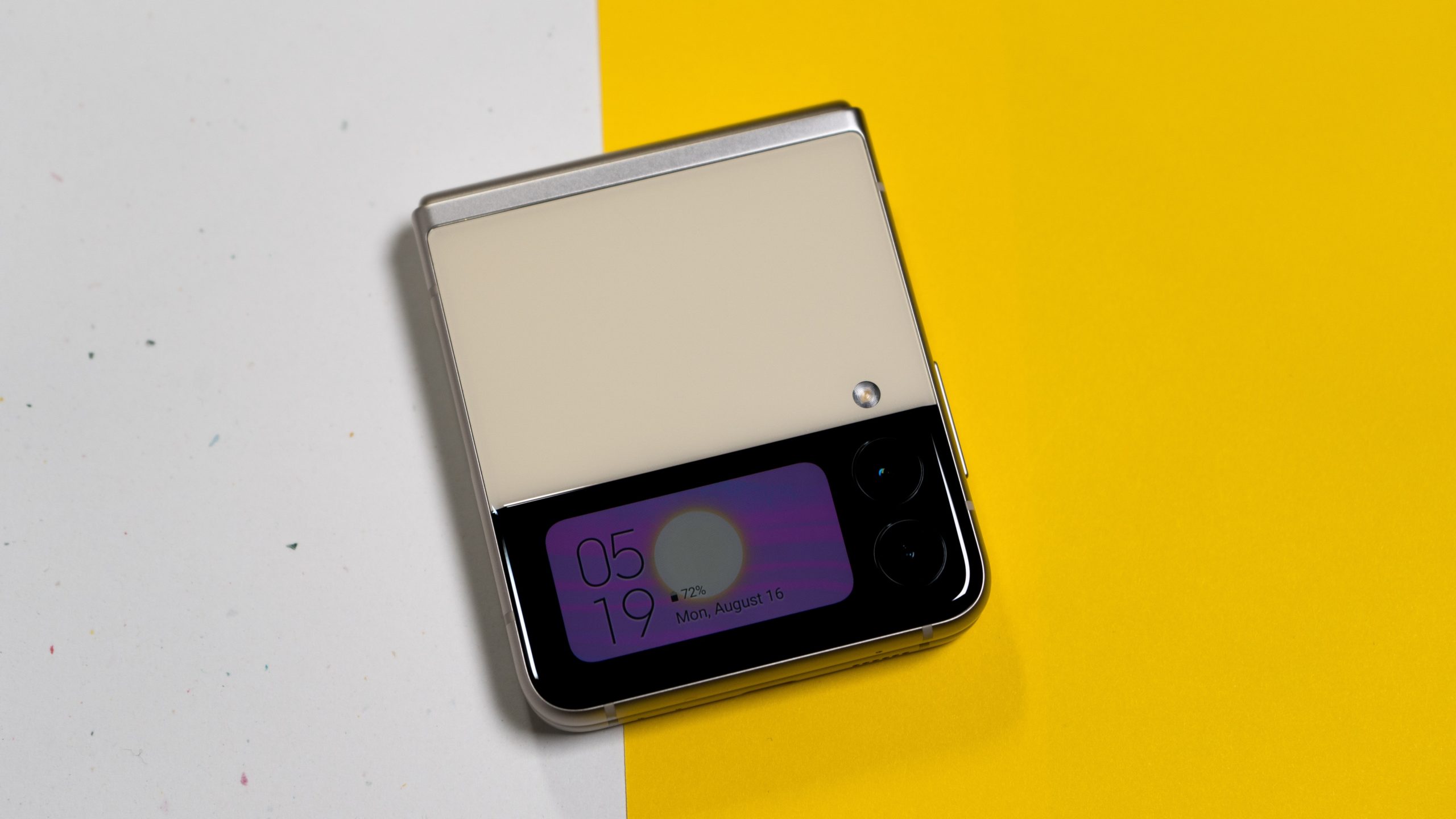
The 1.9-inch Super AMOLED colour display on the back of the device is one of my favourite features of the Z Flip 3. Samsung beefed it up over its predecessor by adding slightly more screen and functionality. I like to stand it up in front of my keyboard during work hours to track the time and notifications as they come in. The screen is small, so you’ll have to open the phone up for some of the longer notifications, but at least you can get a preview before you commit.
When you double-tap the screen, the wallpaper or graphic of your choice pops up. (It looks slick in person.) You can then slide to the right for current notifications or the left for Z Flip-specific widgets. They remind me of the ones that I already use on the Galaxy Watch Active. However, most of them act as exterior placeholders, and if you need to do more than peek at a stat, you’ll have to open the phone for most options.
The best part of the cover display is that it acts as a preview window for the primary camera. This means you can take high-resolution selfies with the Galaxy Z Flip 3’s 12-megapixel camera, which includes optical image stabilisation. Double press the power button as you would with the phone open to launch the camera, then tap the screen to being a quick two-second countdown. It’s enough time to fluff up your hair and fake a smile.
Same Old Cameras
The Galaxy Z Flip 3 has similar camera hardware as in the last Z Flip. It’s still capable of capturing both the exciting and the mundane daily. The Z Flip 3 is equipped with two main cameras: a 12-megapixel camera with an f/1.8 aperture and a wide-angle lens with PDAF and the OIS mentioned above. There’s also an additional 12-megapixel camera with an f/2.2 aperture that has a 123-degree ultrawide lens.
Unfortunately, I had the worst conditions for shooting outdoor photography, as the state of California is smack dab in the middle of its annual fire season. At least I could determine how Samsung handles colour profiles compared to the Pixel 5 and OnePlus 9 Pro. On a particularly smokey day, the Z Flip 3’s photos skewed green and were profoundly contrasted. I can tell Samsung is still heavily into saturating the final product, which produces punchier images outright. The Pixel 5’s photos are much more subdued, and though its colour profile seems more tuned to the real thing, Samsung’s approach made the atmosphere decidedly less apocalyptic despite the green hue. The OnePlus 9 Pro appeared more sepia and gold-toned when photographing dry grass, and I found its result to be more pleasing to the eye than either the Pixel 5 or Galaxy Z Flip 3.
Night Photography Is Looking Up
Samsung’s nighttime camera performance has gotten better in recent years, but it still has some work to do to improve over the Pixel’s final shots. Samsung’s result of a starry photo shot featured more silhouettes, and the colour reproduction appeared more realistic compared to what I saw for myself while looking out the window. But the Pixel 5’s Night Mode picked up more ambient light from the background, which adds more depth to the scene. I also found the Pixel 5’s colour reproduction in dim light to be more pleasing than Samsung’s. The Galaxy Z Flip 3 did excel at sharpness, however, and most of the photos I snapped without a tripod were clearer when zooming in than the Pixel 5.
It’s not technically a front-facing or a selfie camera since the Z Flip 3 lets you do the latter with the main camera hardware. The inside camera lens is 10-megapixels with an f/2.4 aperture capability. It works well for video chats and Instagram confessionals. But you’ll find that the prime selfie experience, whether solo or with friends, is vis-a-vis the primary camera with the phone shut tight.
Same Old Performance, Too
The Galaxy Z Flip 3 is one of the first of Samsung’s devices to feature a 5nm Snapdragon 888 on the inside. It’s excellent news for component consolidation, but don’t expect the highest performing silicon in the business yet. Still, that doesn’t mean the Z Flip 3 isn’t as capable as other smartphones on the market.
Along with its 8GB of RAM, this smartphone is a relative powerhouse in its own right. I felt no stutter switching between games, apps, videos, and podcasts. In Geekbench 5, the Z Flip 3 scored 3180 in multicore, putting it along with the ranks of last year’s OnePlus 8 Pro and its flagship sibling, the Galaxy S21.
Battery Life Leaves You Hanging
Battery performance had me more worried, considering the Z Flip 3’s giant display and high refresh rate. The Galaxy Z Flip 3 has a 3300 mAh battery on the inside with 15W fast charging capabilities, 10W wireless fast charging, and 4.5W reverse wireless charging. That’s quite a few ways to work with such a small battery pack, at least compared to the other big-screened smartphones that have come out in recent years. Even Samsung’s Galaxy S21 has a larger 4000 mAh battery for its 6.2-inch screen. Ultimately, I managed about 11 hours in full in Gizmodo’s battery rundown test before the Z Flip 3 wholly petered out. It’s shorter than the Pixel 5’s 16 hours, and even the Galaxy S21 managed at least 12 hours.
Samsung’s Take on Android Is an Adjustment
There are still some things I’m figuring out about this particular form factor. Most of it has to do with Samsung’s One UI and its interpretation of Android specially tailored to its smartphones. Some of the menu structures vary from what I’m used to on Google’s version of Android on the Pixel or even OnePlus’s version of Oxygen OS running atop Android 11 on its flagship smartphones. That’s all to say that if you haven’t been on a Samsung device in a while, remember that it’s the company’s version of Android and not necessarily Google’s, despite how closely the two companies worked together to make apps better accommodate to folding screens.
At the very least, Samsung has committed itself to three years of major software updates, about on par with what Google offers. But as the company’s track record has proven thus far, you’re like to get the latest version of Android a bit later than when Google pushes it out to the Pixel devices.
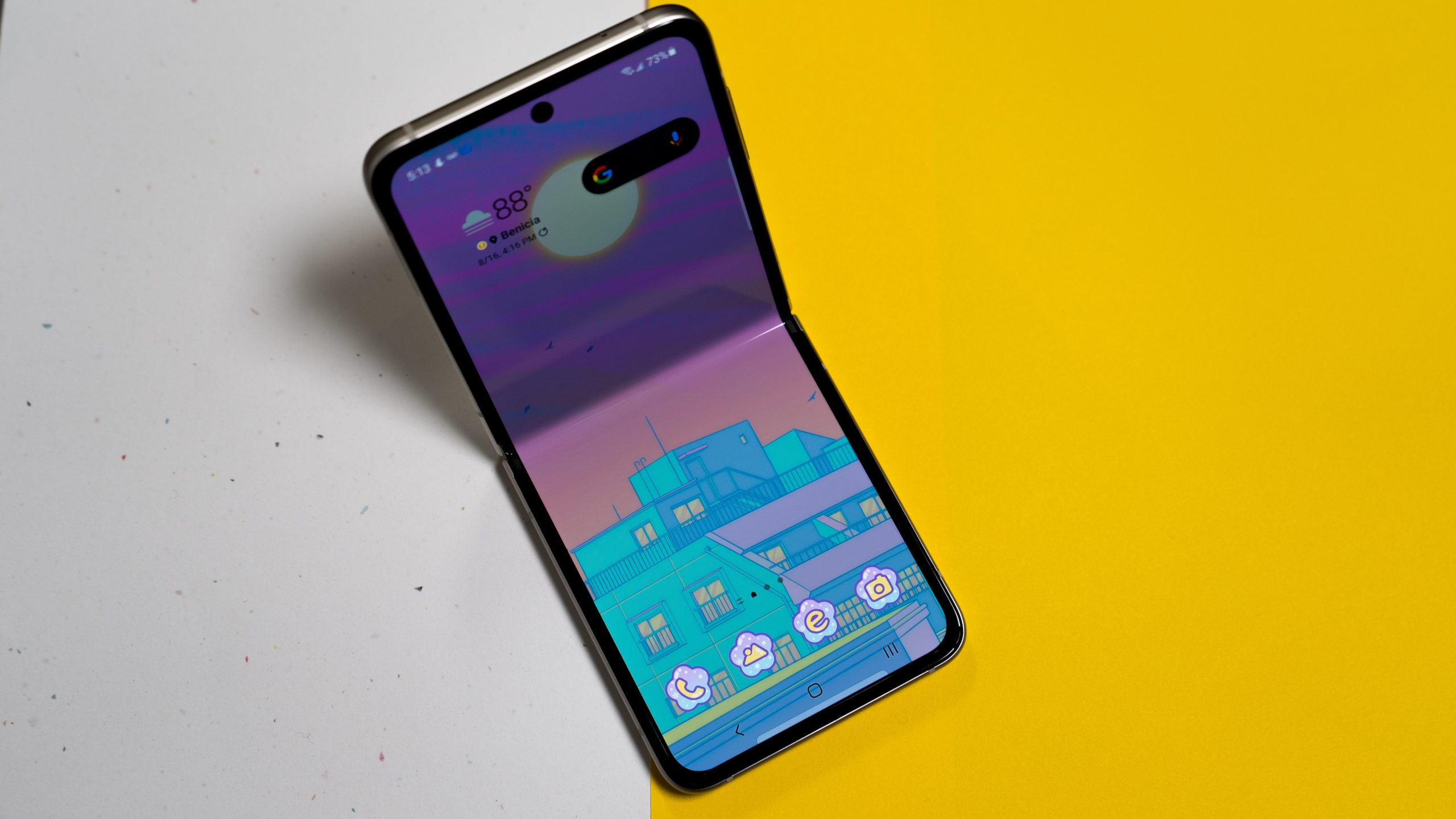
Every time I pick up the Galaxy Z Flip 3, I think about whether this is a form factor I could see myself living with day in and day out. Truthfully, I’m still straddling the line. Though there is plenty to like about this flip phone, the fact that it folds is a serious commitment to a new way of using a smartphone. Snapping a photo takes a beat as you move to flip open the phone and get the camera situated. Holding the phone one-handed is hard without help from a case accessory since the screen is so tall. And you’ll have to make some concessions to battery life, which is sure to show its limitations over time.
If you’re curious about the experience and are willing to take the plunge, the price is a little less daunting than it used to be. The Galaxy Z Flip 3 starts at $1,499 now. That’s only $70 more than the Pixel 5a, which is a traditional smartphone with mid-range offerings. But you’ll still have to ask yourself if it’s worth trading in what you’ve known all this time for a brand new experience.
